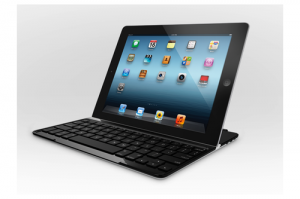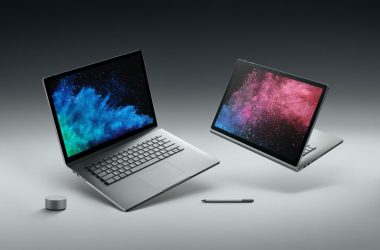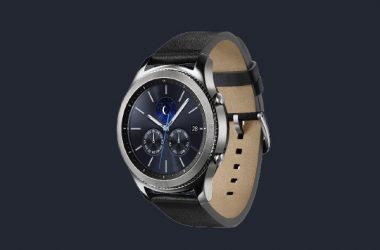 As more and more people are using the iPad for quote-real-unquote work, iPad keyboards are becoming popular accessories, offering the tactile advantages of real keys without sacrificing the iPad’s portability and touchscreen interface.
As more and more people are using the iPad for quote-real-unquote work, iPad keyboards are becoming popular accessories, offering the tactile advantages of real keys without sacrificing the iPad’s portability and touchscreen interface.
Back in December, I wrote our iPad keyboards buying guide based on my testing of approximately three dozen keyboards, but a number of new models have been released since then.
One of the best is Logitech’s $100Ultrathin Keyboard Cover for the second- and third-generation iPad. Despite its confusing name – no, it’s not a cover for your keyboard – the Ultrathin Keyboard Cover (which I’ll call the Ultrathin from here on out) is a solid keyboard that mostly makes the right compromises between portability and functionality.
Like most iPad keyboards, the Ultrathin connects using Bluetooth. Just turn it on, open the Bluetooth screen of iOS’s Settings app, and tap the keyboard’s name when it appears in the list of devices.
You’ll be prompted to enter (on the keyboard) a four-digit code and press Return. After this one-time pairing process, the keyboard will automatically reconnect to the iPad whenever both are on and in range of each other. (If you ever need to re-pair the keyboard, or pair it to a different iOS device, there’s an easy-to-press Bluetooth button next to the keyboard’s power switch.)
The keyboard charges from any USB port or charger; Logitech claims a fully charged battery will power the keyboard for a whopping six months if you use the keyboard roughly two hours each day.
What’s unique about the Ultrathin is its design. Instead of being a folio- or clamshell-style keyboard, where the iPad fits inside a complete-protection case, or a shell-style keyboard, which fits around the sides and either the front or back of your iPad for travel, the Ultrathin could best be described as a “Smart Cover keyboard.”
Like Apple’s iPad Smart Cover, the Ultrathin is exactly the same length and width as the iPad and sports a magnetic hinge. Hold the hinge near the left-hand side of the iPad, and the magnets in each device find each other for a perfectly aligned connection.
The Ultrathin then hinges closed to protect the iPad’s screen during transit; rubber pads at each corner, along with a slightly recessed keyboard, mean the keys never touch the iPad’s screen. The Ultrathin even supports the iPad’s magnetic sleep/wake feature.
Like the Smart Cover, the Ultrathin leaves the back of the iPad unprotected. You can use a Smart Cover-compatible back case if you need the extra protection, although not all are compatible. For example, you’ll want one that has an large opening for the Smart Cover’s hinge, rather than one–such as Incipio’s excellent Smart Feather – that actually attaches to the hinge, because the keyboard’s hinge is a bit thicker than the Smart Cover’s.
The Ultrathin and iPad fit together exceptionally well, forming a sleek, thin, aluminum package that weighs only 12 ounces more than a bare iPad. Unfortunately, you can’t fold the keyboard around to the back, as you can with Zagg’s Zaggfolio, when you don’t need the keyboard. You must instead detach the keyboard and use the iPad on its own. At least doing so is quick and easy.
When you’re ready to type, you open the cover, give a gentle tug on the iPad to disconnect it from the Ultrathin, and then place the iPad in a groove just above the Ultrathin’s keyboard. A clever touch is that the groove has its own set of magnets to keep the iPad firmly in place in landscape orientation, provided you place the iPad’s left edge down. In the other three orientations (right edge down, or either portrait position), a rubber strip along the front edge of the groove helps keep the iPad secure.
The groove limits the iPad to a single angle, but it’s a pretty good one–approximately 30 degrees from vertical. I would have preferred five or ten degrees more, especially when using the Ultrathin on my lap, but a less-upright angle would have made the Ultrathin noticeably less stable.
Speaking of stability, when your iPad is in landscape orientation, the Ultrathin is pretty solid. Only if you tend to type hard will you notice a very slight jiggle of the iPad. You can also tap the iPad’s screen without much movement–firm taps along the top edge of the tablet will lift the front of the keyboard off your work surface, but otherwise you’ll see only slight shaking.
In portrait orientation, you get a bit more iPad vibration while typing, and you have to be careful when tapping on the top half of the screen to avoid tipping. But considering that many iPad keyboard cases don’t even let you use your iPad in portrait orientation, I don’t want to be too critical here. I will say, however, that if you want to use the Ultrathin on your lap, you should stick to landscape orientation–portrait orientation is unstable on softer surfaces.
One minor beef I have with the Ultrathin’s design is while the bottom–made of smooth aluminum that looks and feels almost exactly like the back of the iPad–looks great, especially when the cover is closed against the iPad, on slippery surfaces the keyboard can slide around when you’re typing or when you tap the iPad’s screen.
I ended up sticking a couple Bluelounge Kicks to the bottom for some grip, though you could use any kind of pad or adhesive feet. (This would also help prevent the Ultrathin’s aluminum bottom from getting scratched.)
Clever design out of the way, how is the actual keyboard? As with most iPad keyboard cases, the Ultrathin’s keys are slightly smaller than those of a full-size keyboard, and the layout is slightly cramped.
Unlike most others, however, the Ultrathin omits a dedicated row of F-keys. Instead, the keys in the number-key row, themselves smaller than usual, double as special-function keys.
Hold down the fn key in the lower-left corner of the keyboard, and each of those keys offer an iPad-specific function: Spotlight, language cycle, onscreen keyboard toggle, select previous word, select next word, cut, copy, paste, play/pause, mute, volume down, volume up, and lock. (The inclusion of features for selecting, copying, cutting, and pasting text means the Ultrathin doesn’t include screen-brightness keys or previous and next media-control keys.) There’s also a dedicated Home key.
Thanks to this F-key-row omission and the smaller keys used in the number-key row, the Ultrathin’s keyboard feels more cramped than that of similar keyboard cases, but it really isn’t. In fact, when comparing the main (non-number and non-function) keys, the size and spacing are almost identical to those of the aforementioned, and very good, Zaggfolio. With a couple exceptions–tilde (~) and backtick (`), which have been moved to the [ and ] keys, respectively, and accessed via fn–keys are also in their standard locations.
The keys themselves are low-profile, short-travel, laptop-style keys. While not as good as the keys of non-case iPad keyboards–which tend to be closer in feel to those of Apple’s current keyboards–they’re much better than the mushy keys you’ll find on many keyboard cases. One minor complaint is that in my testing, the keys need to be depressed slightly farther than they feellike they need to be depressed.
As a result, when I was typing quickly, I occasionally wouldn’t press a key firmly enough. I’ve experienced this with a number of iPad keyboards–it appears to be a side effect of attempting to make these keyboards as thin as possible while still providing a solid, tactile feel. Still, the Ultrathin’s keys are among the better ones I’ve tested.
I also give the Ultrathin kudos in that it has no sharp, raised edges that dig into your hands or fingers. The lip along the front of the keyboard is very short and has rounded edges–I never noticed it while typing, or even when I rested my wrists on the table in front of the keyboard.
Macworld’s buying advice
iPad keyboard cases are lessons in compromise–no company has been able to put full-size, quality keys in a standard layout inside a thin, lightweight, protective case that doesn’t add significant bulk to your iPad (or turn it into what’s essentially a laptop). This is one reason some people still prefer a separate keyboard with a portable iPad stand. But the Ultrathin Keyboard Cover is a good example of making the right compromises.
Though it doesn’t offer much protection for the body of your iPad, it includes a solid (if compact) keyboard, and its clever, Smart Cover-like design allows it to remain thin and light. One of my biggest criticisms of keyboard cases–as opposed to standalone keyboards–is that you have to take them with you even when you don’t need the physical keyboard.
The Ultrathin is svelte enough that if you do serious typing on your iPad, you may want to carry it with you all the time.





